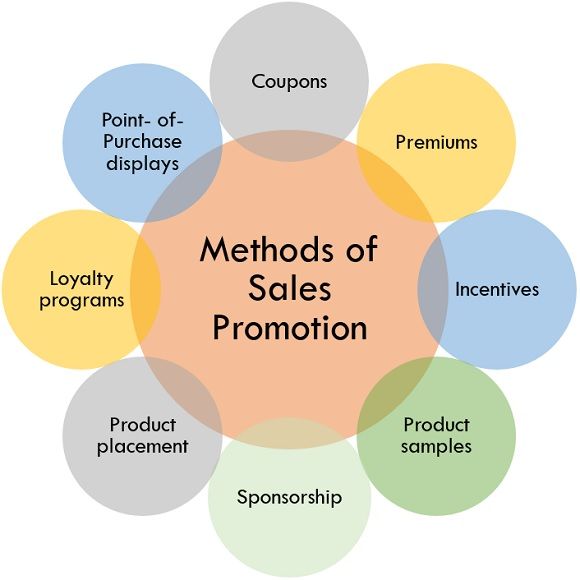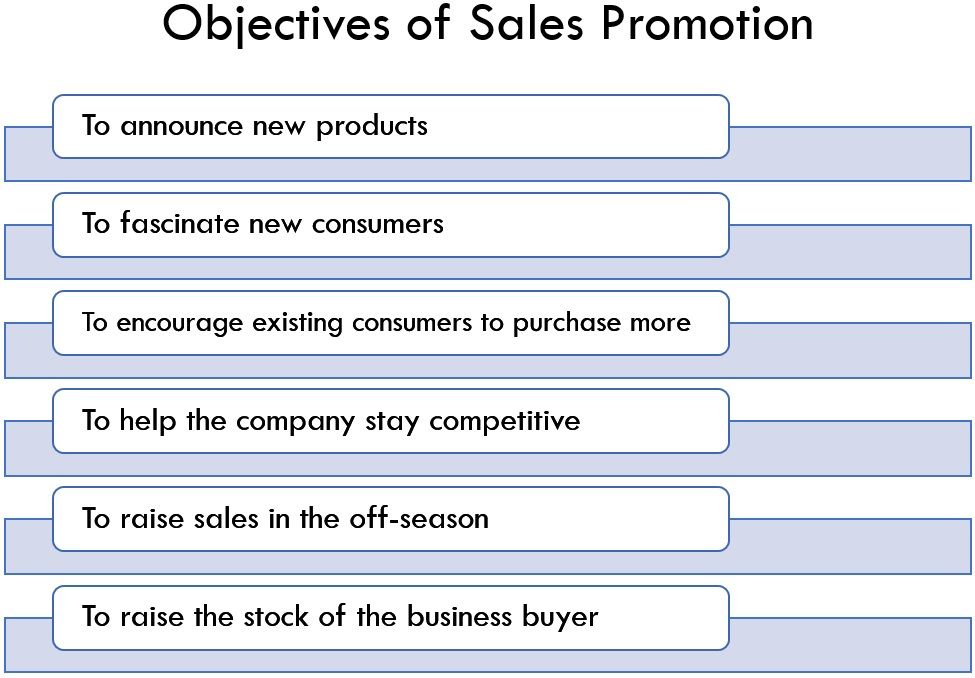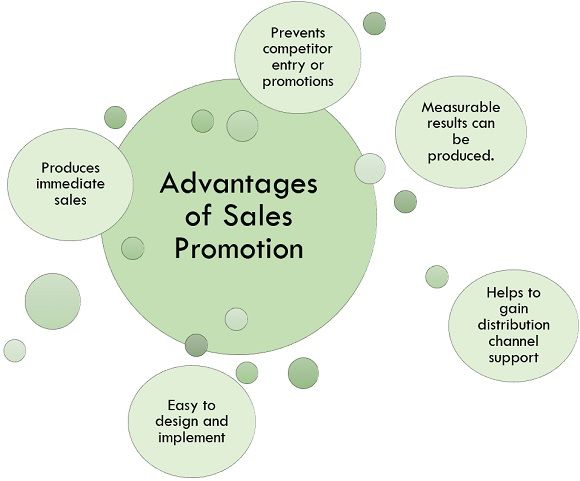Definition: Sales Promotion is the marketing actions excluding personal selling, advertising and promotion that provoke customer buying and dealer efficiencies like display shows, written description, trials and distinct non-current selling exercise not in the normal routine.
It is one of the significant function of the marketing mix that involves coupons, discount deals, contests, prizes, rebates and other procedures outlined to obtain a quick response from the customers. However, It only affects the timing of purchase instead of the decision to purchase.
Content: Sales Promotion
Methods of Sales Promotion
Incentives used to stimulate purchasing such as coupons, product placements, and buyer programs are some of the methods we use in sales promotion to promote our products and services and encourage purchasing. Few more methods of sales promotion are as follows:

- Coupons: Coupons such as 50% off, save ₹100 on purchase of 500, buy one get one free are frequently used to attract customers towards the products of your brand.
- Premiums: These low-cost items were given to customers at a discount or for free to build loyalty and fascinate customers. Logo pens, keychains and coffee mugs are typical examples of it.
- Incentives: Incentives builds the customer’s excitement. Thus, marketers conduct contests, lucky draws and provide rebates to their loyal customers to retain them with their product. This also attracts the new customer group toward their product.
- Product Samples: Providing samples of your new product with other famous products of your company also increase the sales of your products.
- Sponsorship: This is what in which a company pays a fee to put their name and logo on a physical site.
- Product Placement: We have seen in many realities shows a mug having a logo of a particular drink name is kept in front of celebrities, that is a product placement method of sales promotion and this method brings recognition for their brand.
- Loyalty Programs: It is also known as buyer programs. In these programmes, companies award their customers for the purchases.
- Point- of- Purchase Displays: We see almost everywhere particular corner are made displaying the products of a specific brand. They are usually placed in high traffic areas and encourages impulse buying.
Nature of Sales Promotion
Sales Promotion actions are abstract and often non-recurring. It ultimately facilitates to the customers, industrial users, and intermediaries and acts as a bridge between advertising and personal selling, as well as enhance and integrate efforts in these two sectors. The significance of sales promotion has raised enormously and in current times, thousands of rupees are spent on deciding the most efficient methods and appeals for striking the concern of the prospects towards the vendor’s space of business.
Dynamic sales promotion programs abolish customer’s dissatisfaction about specific commodities of a particular producer. However, advertising media arrive at a customer can soon be suppressed, sales promotional equipment of reminding or inspire the consumer to make a purchase immediately on the spot.
Objectives of Sales Promotion
The following are the objectives of the sales promotion:

- To announce new products
Encourage customers to buy a new product, complimentary samples may be dispersed, or money and stock allowance can be awarded to business reserve and sell the product.
- To fascinate new consumers
New consumers can be fascinated by the allocation release of complimentary samples bonus, contests and the same products.
- To encourage existing consumers to purchase more
Existing consumers can be encouraged to purchase more by knowing more about a commodity, it’s elements and uses.
- To help the company stay competitive
Sales promotion can be initiated to meet competitions amongst companies.
- To raise sales in the off-season
Buyers can be inspired to use the goods created in the off-season by displaying them the variations of uses of the products.
- To raise the stock of the business buyer
Retailers can be encouraged to maintain a stock of more units of products so that mere sales can be enacted.
Advantages of Sales Promotion
It has the following advantages:

- Produces Immediate Sales
Because of this kind of sales promotion measures, people get very excited to buy more. It generates excitement, and customer again wants to purchase the product.
- Prevents Competitor Entry or Promotions
Any competitors who are trying to enter the market and attain your market share cannot do so when you go ahead into sales promotion because if they are already in an established darn, they are doing very well. On top of that, if you come up with your offers in sales promotion measures, then the competitors cannot do anything in this matter.
- Measurable Results can be Produced
Measurable results can be produced because it is a short-term event. Thus, the sales volume generated during your sales promotion period can be easily measured.
- Helps to Gain Distribution Channel Support
A distribution channel is nothing but the people involved in distributing your product. It could be a dealer, retailer, etc. Thus, you get to put your product by using sales promotion tools as well. If you give discounts or deals to your dealers, then they help you to sell your product, and this could benefit and increase your sales.
- Easy to Design and Implement
In advertising, there are so many costs involved, so many competitors are involved, so it becomes challenging to decide what kind of advertisement should you come up with and how it should be. Out in the case of sales promotion, it is relatively easier to design and implement your activities; you can calculate your costs and their effects on the sales accordingly.
Disadvantages of Sales Promotion
It has the following disadvantages:
- It is for the short-term.
- Excessive use of it can also harm the brand value.
- It may create confusion in the customer’s mind.
- It attracts only price switches.
- Forward buying.
- Sometimes it gets mistreated by both merchant and customers.
Conclusion
Sales Promotion is the use of stimulus by marketers to encourage defined consumer groups to carry out particular activities over time. Its role has dramatically changed from that of the minor element of the promotion mix to a significant aspect of the promotion mix.
Simburaj. S says
Supper✨️